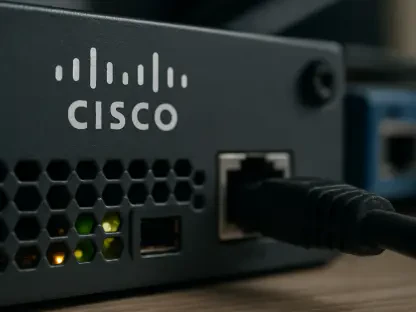Containerized applications have revolutionized the way software is developed, deployed, and managed, offering numerous advantages such as application isolation and resource efficiency. However, with these advancements come new and complex security challenges that traditional protective measures may not adequately address. This article delves into the key criteria for evaluating container security solutions and underscores the benefits they provide to organizations. Container security solutions are specifically designed to safeguard containerized applications and their underlying infrastructure throughout the entire software development lifecycle. From development to deployment and runtime, these solutions aim to maximize the benefits of containerization while minimizing associated risks such as increased attack surfaces and resource sharing.
Configuration Management
One of the fundamental aspects of container security is ensuring that containers, orchestration platforms, and their underlying infrastructure are securely configured. Proper configuration management involves setting up rigorous access controls, appropriate network configurations, and other essential security measures to prevent unauthorized access and potential breaches. Secure configuration management also requires regular audits and compliance checks to ensure that security policies are consistently enforced. This proactive approach helps in identifying and mitigating vulnerabilities before they can be exploited by attackers. By maintaining a secure configuration, organizations can significantly reduce the risk of security incidents and enhance the overall stability of their environments.
Moreover, configuration management tools often integrate seamlessly with container orchestration platforms such as Kubernetes, providing automated and continuous monitoring of the entire environment. This integration ensures that any deviations from the established security baseline are promptly detected and addressed, thus maintaining a high level of security at all times. As a result, organizations can reduce the complexity and overhead associated with manual security management and focus on more strategic tasks.
Vulnerability Scanning
Continuous vulnerability scanning is a critical component of container security and involves systematically scanning container images and registries for known vulnerabilities both before deployment and during runtime. By identifying and addressing vulnerabilities early in the development process, organizations can prevent potential exploitation and ensure the integrity and safety of their containerized applications. Vulnerability scanning tools leverage extensive databases of known vulnerabilities to provide accurate and up-to-date assessments. These tools can be smoothly integrated into the CI/CD pipeline, enabling automated scans at various stages of the development process. This integration aligns with the “shift-left” approach, embedding security more deeply into the development workflow and ensuring that vulnerabilities are addressed before containers reach the critical production stage.
In addition to identifying vulnerabilities, these advanced tools often provide remediation guidance, empowering developers and security teams to quickly and effectively address any detected issues. This proactive approach not only enhances overall security but also accelerates the development process by reducing the time and effort spent on manual security checks. By integrating continuous vulnerability scanning into the development pipeline, organizations can maintain higher standards of security and reliability throughout the lifecycle of their containerized applications.
Runtime Threat Detection and Prevention
Monitoring and protecting running containers is essential for maintaining a secure and resilient environment, making runtime threat detection and prevention a vital aspect of container security solutions. Runtime threat detection solutions establish behavioral baselines for containerized applications, allowing them to detect anomalies that may indicate a security threat. By continuously monitoring container activity, these solutions can identify and respond to potential threats in real-time, ensuring that any malicious activities are swiftly mitigated.
Behavioral analysis and anomaly detection are powered by advanced technologies such as machine learning and artificial intelligence, which enable more accurate threat detection by learning typical behavior patterns and flagging deviations. This approach significantly reduces false positives, allowing security teams to focus on genuine threats and improving overall response times. Furthermore, runtime protection solutions often include features like intrusion detection, file integrity monitoring, and application control, providing comprehensive protection against a wide range of threats.
Incorporating these advanced runtime protections ensures that containerized applications remain secure throughout their lifecycle, even as they dynamically scale and adapt to changing workloads. By utilizing AI-driven tools and continuous monitoring, organizations can maintain the integrity of their applications and infrastructure, reducing the likelihood of disruptive security incidents.
Network Segmentation and Firewalling
Securing communications within a containerized environment is crucial to prevent lateral threat movement, making network segmentation and firewalling essential components of container security solutions. Network segmentation and firewalling solutions involve implementing microsegmentation, encryption, and access controls to protect data in transit and isolate sensitive workloads. Microsegmentation divides the network into smaller, isolated segments, each with its own specific security policies. This approach limits the potential impact of a security breach by containing the threat within a specific segment, thereby enhancing overall network security and resilience.
Encryption ensures that data transmitted between containers is protected from interception and tampering, further safeguarding sensitive information. Firewalling solutions provide an additional layer of security by controlling the traffic flow between containers and external networks. These solutions can be configured to allow only authorized traffic, blocking any unauthorized access attempts. By implementing robust network security measures, organizations can safeguard their containerized environments from a wide range of threats, making it more challenging for attackers to move laterally within the network.
Compliance Monitoring and Enforcement
Automating compliance checks and enforcing security policies throughout the CI/CD pipeline is essential for adhering to industry regulations and best practices, which is where compliance monitoring and enforcement solutions come into play. These solutions continuously assess the containerized environment against established security standards, ensuring that all components meet the required criteria. This continuous assessment provides detailed reports and dashboards, offering visibility into the compliance status of the environment. This visibility enables organizations to quickly identify and address any compliance gaps, reducing the risk of regulatory penalties and reputational damage.
In addition to continuous monitoring, enforcement mechanisms ensure that security policies are consistently applied across the entire environment. This includes automated remediation of non-compliant configurations and continuous validation of security controls to maintain a secure and compliant containerized environment. By integrating compliance monitoring and enforcement into the development workflow, organizations can ensure that their environments remain secure, compliant, and resilient against evolving threats.
Evolving Practices and Key Trends
Continuous vulnerability scanning is essential for container security, involving thorough assessments of container images and registries for known vulnerabilities before deployment and during runtime. By identifying and addressing these vulnerabilities early in the development process, organizations can thwart potential exploits and safeguard their containerized applications. Vulnerability scanning tools utilize comprehensive databases of known vulnerabilities to offer precise, current evaluations. These tools can seamlessly integrate into the CI/CD pipeline, allowing automated scans at various stages of development. This integration supports the “shift-left” strategy, embedding security firmly into the development workflow and ensuring vulnerabilities are mitigated before reaching production.
Beyond identifying vulnerabilities, these sophisticated tools often provide remediation advice, enabling developers and security teams to promptly and effectively resolve any issues found. This proactive stance not only boosts overall security but also expedites the development process by reducing manual security check efforts. By embedding continuous vulnerability scanning into the development pipeline, organizations can uphold higher security and reliability standards throughout their containerized applications’ lifecycle.









